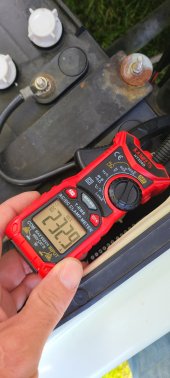ericfx1984
Solar Enthusiast
- Joined
- Oct 10, 2021
- Messages
- 765
So I've been asked to build a lifepo4 battery system for a golf cart the golf cart is 36 volts... So I would guess that we would need about 12 cells
I keep running into is I have read that there can be anywhere between 800 and 1200 amps of surge when the golf cart initially starts moving this is very momentary.. but I greatly doubt that there are any battery Management systems that can handle this
I've been thinking about doing is using the battery management system only for the charging and balancing side of things... But then allowing the discharge side of things to bypass the battery management system
The only real disadvantage I see to doing something like this is not having a low voltage cut off
And I guess in the grand scheme of things even if the batteries were ran all the way down to nothing they would still by far Outlast sealed lead acid batteries which are also ran down to nothing
Looking for any ideas or insight that anyone has thanks
I keep running into is I have read that there can be anywhere between 800 and 1200 amps of surge when the golf cart initially starts moving this is very momentary.. but I greatly doubt that there are any battery Management systems that can handle this
I've been thinking about doing is using the battery management system only for the charging and balancing side of things... But then allowing the discharge side of things to bypass the battery management system
The only real disadvantage I see to doing something like this is not having a low voltage cut off
And I guess in the grand scheme of things even if the batteries were ran all the way down to nothing they would still by far Outlast sealed lead acid batteries which are also ran down to nothing
Looking for any ideas or insight that anyone has thanks



